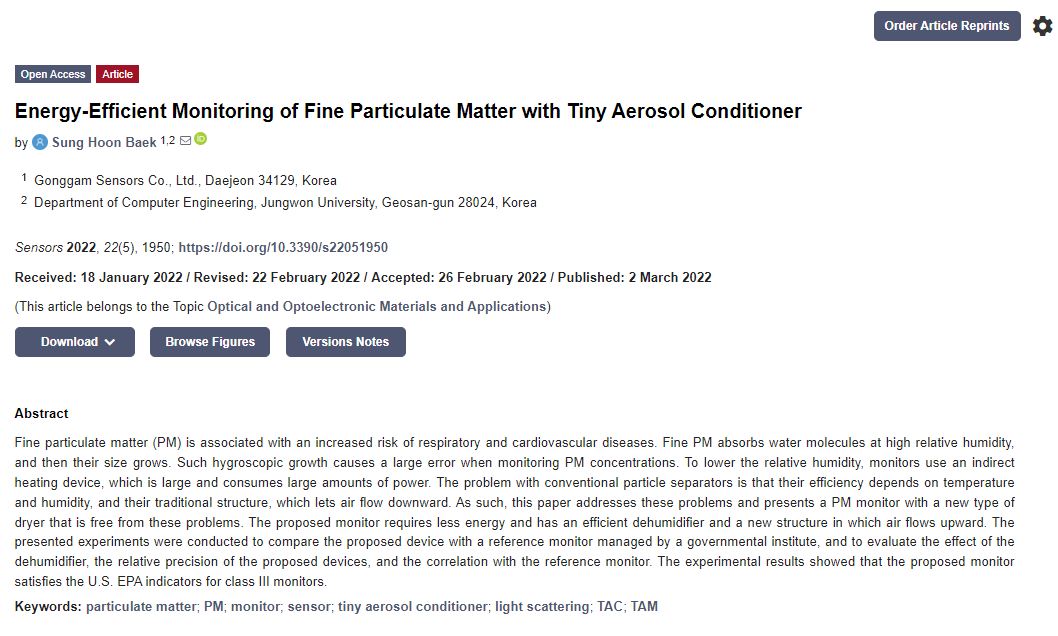Technologies
Problem
Find particles could be critical to the health and the climate.
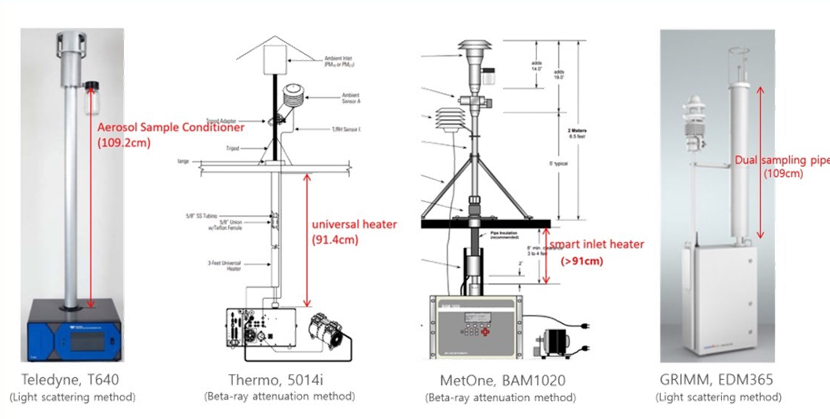
Solution
We made efforts to solve the existing device problems and developed the 1st generation Smart AQ Monitor, called TAM. TAM is equipped with a direct-heating desiccant device of 1-inch length, allowing real-time drying of humidity-based fine dust through precise control using artificial intelligence. Moreover, by utilizing the buoyancy generated in the opposite direction of gravity in the device’s airflow, it achieves low power consumption, simplifying maintenance and blocking the entry of coarse particles at its source. This enables the provision of accurate and real-time air quality measurements that high-end equipment cannot offer.
.
Years of R&D, we have found the solution and came up with a Smart Monitor that can bring accurate information in a timely manner.
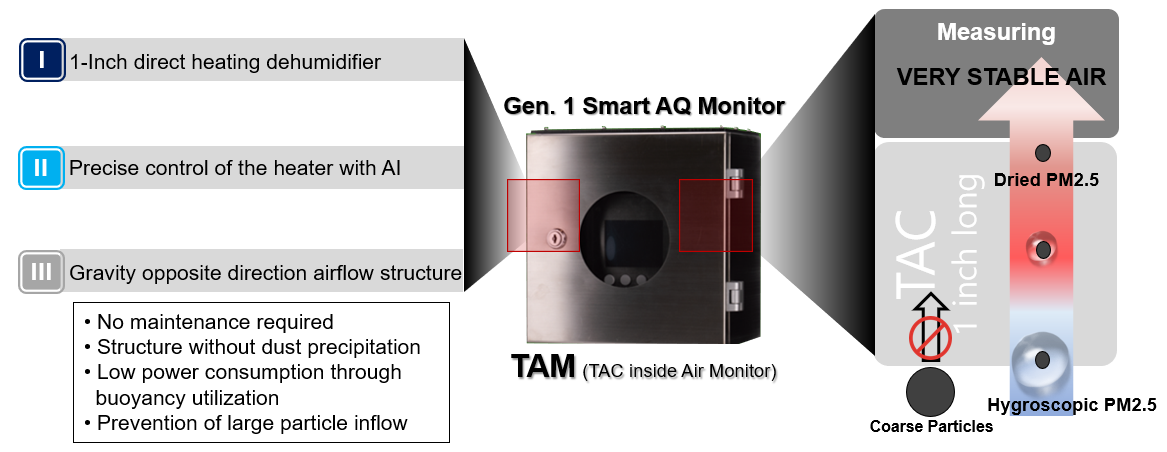
Research Paper
Patents
Evaluation
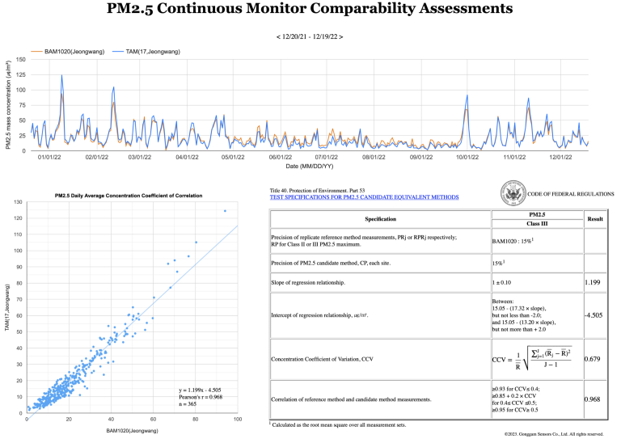

When it comes to the air we breathe, unreliable or out-of-date information can be more harmful than no information at all.
As monitors before the advent of ICT-based innovative technology have been commercially used for decades, they suffer from high cost, low temporal and spatial resolution, low power efficiency, and challenging installation and maintenance. These not only result in information asymmetry between developing and developed countries but also fail to contribute significantly to health even in developed countries.
Moreover, many commercially available makeshift measurement monitors based on the light-scattering method overlooked the hygroscopic problem of fine dust, making accurate air quality measurement impossible.
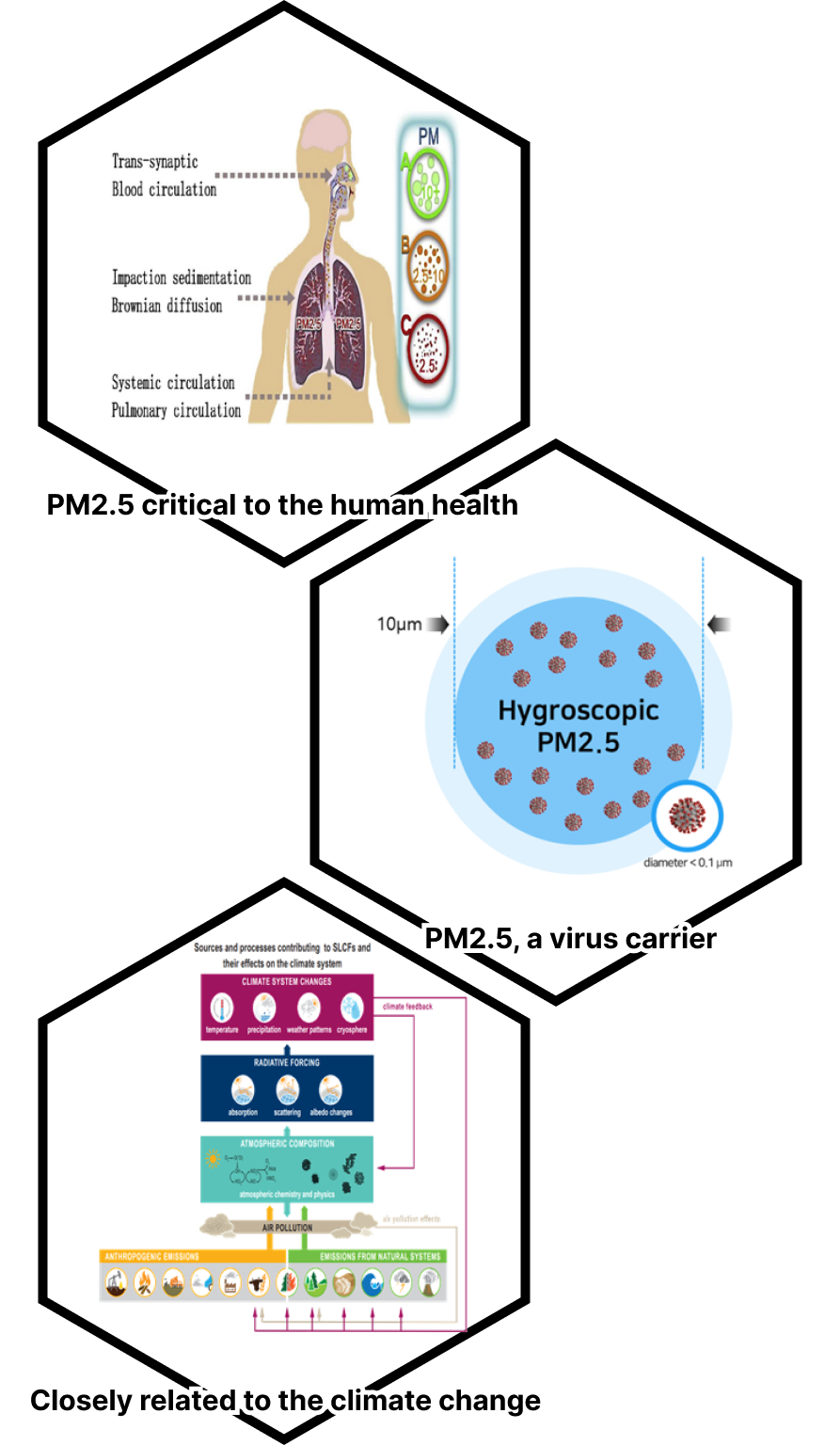
Certified test report (Electronics and Telecommunications Research Institute)
TAM has a very high accuracy with a correlation coefficient (r) of 0.993

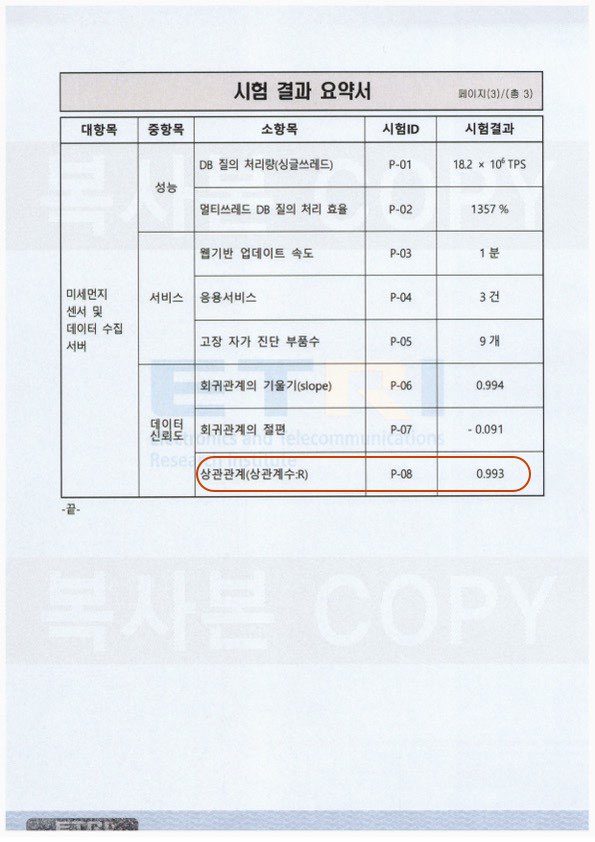
The correlation coefficient (r) was 0.993, which was confirmed by a certified test by Electronics and Telecommunications Research Institute. A correlation coefficient close to 1 means that the two comparison data are identical.
Period: Dec 9 2022 ~ Dec 21 2022
Place : Jeongwang Health Center, Siheung-si, Gyeonggi-do, South Korea
Test data: The National equivalent monitor (BAM1020) at Jeongwang Health Center and a TAM of Gonggam Sensors
Long Term Evaluation (365 days)
Comparison of daily average data between national equivalent method (model: BAM1020) and TAM for 1 year.
Place : Jeongwang Health Center, Jeongwang-dong, Siheung-si, Gyeonggi-do, South Korea
Period: Dec 20 2021 ~ Dec 19 2022 (365 days)
National monitor data source: AirKorea https://www.airkorea.or.kr
TAM data source: https://airnow.kr/ggtam
Result: the correlation coefficient is 0.968 between these two devices (FEM BAM1020 and TAM). There is some difference in summer, but it is not an error of TAM. It is from the error of the mechanical PM separator of FEM BAM1020. Please, see the evaluation for summer with EDM365 and TAM below. EDM365 has no mechanical PM separator.

The data comparison between GRIMM EDM365 and TAM for 1 year.
Place : Jungang Park and Jeongwang Health Center, Jeongwang-dong, Siheung-si, Gyeonggi-do, South Korea
Period: Dec 20 2021 ~ Dec 19 2022 (365 days)
Data source: National Institute of Forest Sciencehttp://aican.nifos.go.kr/data/obsrrData.do# (시화_주거)
Result: the correlation coefficient is 0.958 between EDM365 and TAM. Even in summer, EDM365 and TAM have a high correlation because EDM365 has no erroneous mechanical PM separator.

The data comparison between EDM365 (GRIMM) and BAM 1020 (Met One Instruments).
Place : Jungang Park and Jeongwang Health Center, Jeongwang-dong, Siheung-si, Gyeonggi-do, South Korea
Period: Dec 20 2021 ~ Dec 19 2022 (365 days)
Result: The correlation coefficient of EDM365 is 0.947. but that of TAM is 0.968. TAM is better than EDM365.


